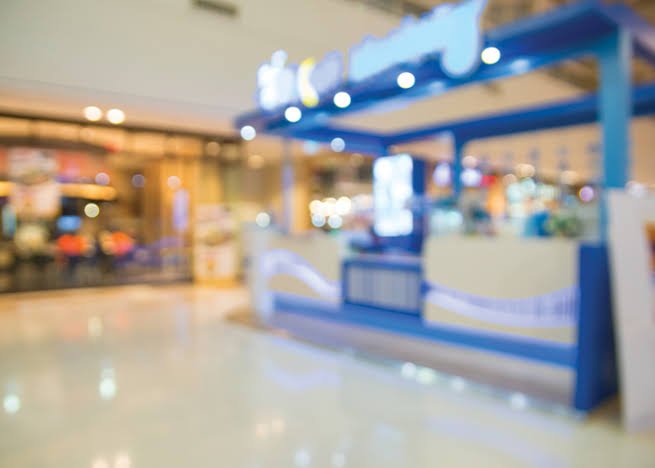How Retail Kiosks Are Changing the Retail Landscape
Retail kiosks are electronic or manned by humans, often positioned to serve a specific purpose. Generally, the business model is less costly than renting a storefront space in a mall or other location.
Retailers and restaurants are utilizing kiosks to help reduce line length, improve customer service, and increase sales. Consumers are drawn to them because of the following benefits:
Increased Convenience
Congested parking lots, out-of-stock merchandise, and interminable checkout lines were once retail realities that consumers reluctantly tolerated. Today’s shoppers want retailers to spare these inconveniences and reward their business with quick, accessible shopping excursions. Retailers that deliver on this new definition of convenience will outperform their competitors.
Kiosks offer the convenience shoppers crave and can provide a range of services that support the entire shopping experience. From bridal and gift registries to non-stock product ordering, employment, wayfinding directories, and more, kiosks can help make the shopping journey easier for customers.
By doing this, you can ensure that your clients will always receive the best possible customer service. This helps improve employee job satisfaction and frees up time for them to focus on more engaging, complex customer service tasks. This also helps companies boost sales by promoting specials and offers at the kiosk. This is especially useful for companies running seasonal storefronts or offering products for particular occasions.
Personalized Experiences
Retail kiosks help brands create personalized experiences for their customers. A retailer can collect real-time consumer insights by using data capture technologies such as cameras, sensors, computer vision, and heat mapping. This data can then be used to deliver targeted content and personalization that will increase customer engagement and improve loyalty.
Kiosks can also provide on-demand answers to frequently asked questions (FAQs). This helps reduce employee workload and can save businesses money on labor costs. In addition, retail kiosks can be used to upsell and cross-sell products. This increases the average transaction value and boosts revenue.
Personalized marketing is no longer a luxury for retailers; it’s a necessity. In a world where customer loyalty is more important than ever, providing customized experiences will allow brands to close the empathy gap between them and their consumers.
Increased Sales
For many consumers, shopping at a kiosk can add another level of convenience. For example, a stall that offers the ability to order products online is a great way to boost sales to customers who otherwise wouldn’t have purchased products in-store.
Additionally, retail kiosks with bill-payment capabilities enable customers to skip the check-out line, resulting in a faster and more efficient checkout process. This also frees employees to help other customers, boosting customer satisfaction and revenue.
Kiosks also allow businesses to learn more about their customers. By integrating their stall with data collection, companies can create targeted content to improve the overall experience for consumers.
By adding a kiosk to their retail space, businesses can reduce the need for 24*7 staff and cut down on operating costs in the long run. The best kiosks for retail integrate seamlessly with existing systems, eliminating the need to retrain employees or introduce new software.
Increased Customer Satisfaction
Kiosks enable retail businesses to capture valuable customer information and insights while empowering shoppers to engage with their brand uniquely and customized. This data can flow into a business’s CRM systems, enabling retailers to make informed decisions about the future of their brands and products.
Consumers can use kiosks to learn more about a product, get help finding the proper size or color, and even personalize an item for a one-of-a-kind experience. This merging of physical and digital is referred to as “physical.” it allows brands to offer customers a new type of shopping experience that is engaging and convenient.
In-store self-guided kiosks can boost customer order value by upselling higher-margin add-ons and reducing the number of errors during the ordering process. They can also speed up the average transaction time while delivering high accuracy. Studies have shown that optimized self-service kiosks increase the dollar value of orders by 15 to 30 percent.
Increased employee satisfaction
In addition to lowering labor costs, kiosks empower employees by providing tools to help customers find what they’re looking for. With the ability to co-browse with a customer, kiosks allow employees to fill knowledge gaps and provide personalized recommendations. In the end, a happy employee is a more productive one.
Kiosks can also shorten waiting times at the store checkout. This enables customers to buy and pick up their orders quickly and efficiently while creating a more engaging experience in the store. Many of these kiosks can even be used as upselling tools, with customers able to choose add-on items while ordering and paying.
For workers, getting a job at a retail kiosk usually means working temporarily. Independent sellers or companies with large storefront stores often operate kiosks that rotate employees into running a cubicle for a few months to sell products geared toward specific holiday seasons. This gives workers a chance to experience working in a different type of store and gain valuable work experience.
Conclusion
In conclusion, retail kiosks have become a cornerstone of the modern shopping experience. They offer unparalleled convenience, personalization, increased sales, and enhanced customer and employee satisfaction. As the retail landscape continues to evolve, businesses that embrace the potential of retail kiosks are better positioned to thrive in this dynamic environment.






